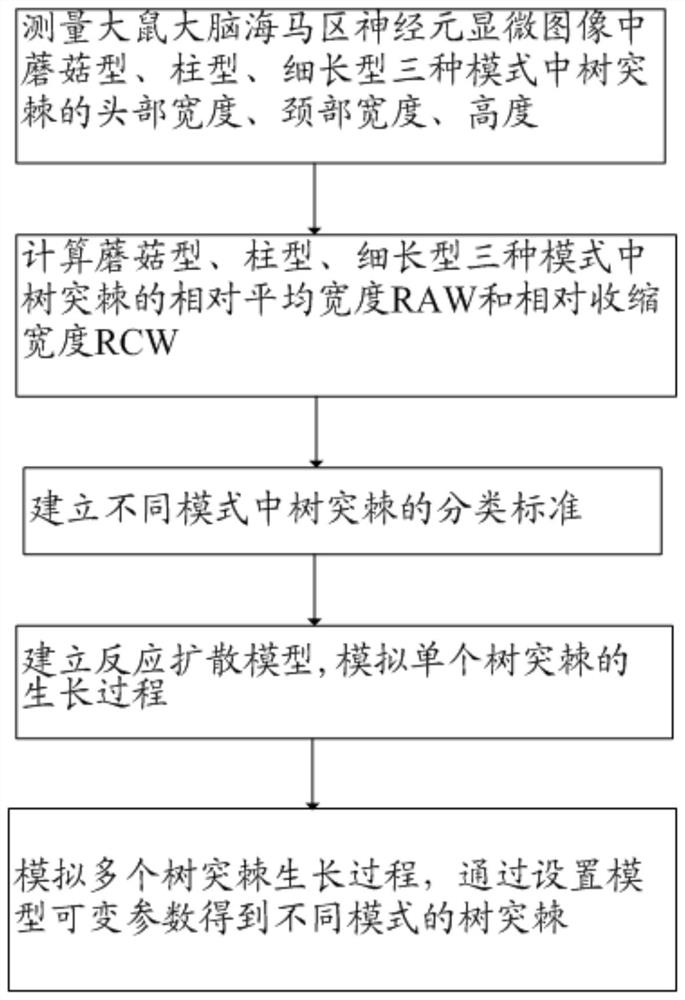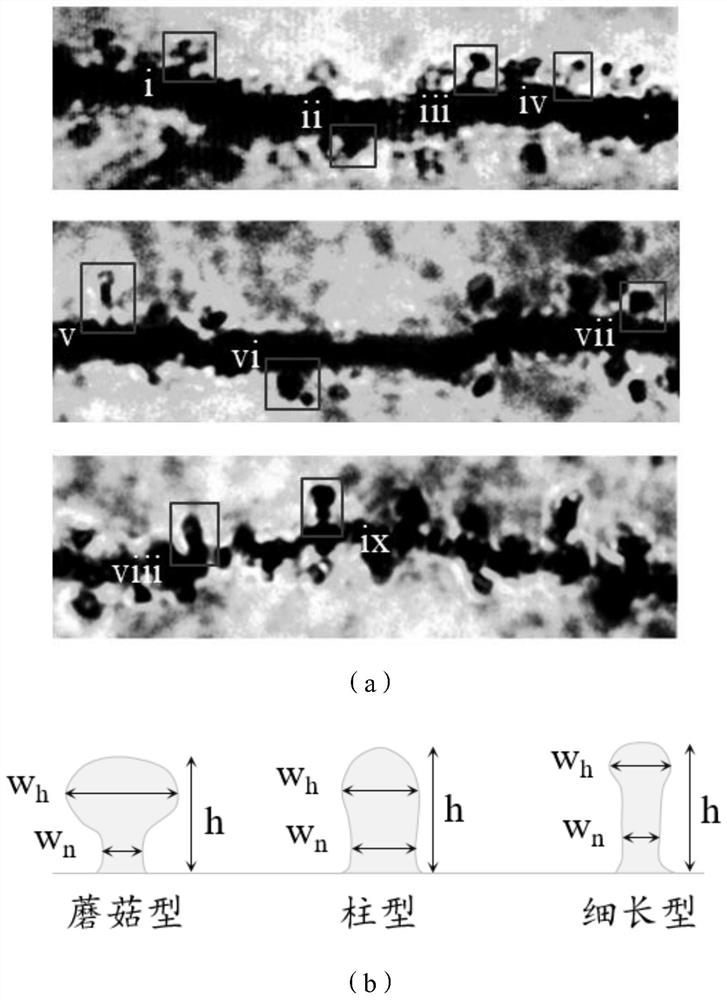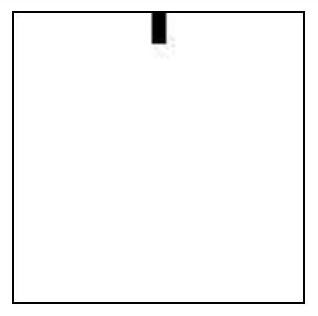Method for establishing neuron dendritic spine development mode based on reaction diffusion model
A diffusion model and model building technology, applied in medical simulation, medical informatics, informatics, etc., can solve problems such as lack of explanation, and achieve the effect of avoiding animal experiments
- Summary
- Abstract
- Description
- Claims
- Application Information
AI Technical Summary
Problems solved by technology
Method used
Image
Examples
Embodiment 1
[0040] Embodiment 1: as figure 1 As shown in the flow chart: a method for establishing the developmental model of neuron dendritic spines based on the reaction-diffusion model, including the following steps:
[0041] S1, identifying dendritic spines in four patterns of mushroom, columnar, elongated, and branched in the microscopic images of neurons in the hippocampal region of the rat brain, and measuring the dendritic spines in the three patterns of mushroom, columnar, and elongated Dendritic spine head width w head , neck width w neck , height h;
[0042] S2, according to the width of the dendritic spine head w head , neck width w neck And height h, calculating the relative average width RAW and the relative shrinkage width RCW of dendritic spines in the three modes described in step S1;
[0043] S3, Establishing classification criteria for dendritic spines in different patterns;
[0044] S4, establish a reaction-diffusion model, set the initial conditions for simulati...
Embodiment 2
[0069] Example 2: The method for establishing the developmental pattern of neuron dendritic spines described in Example 1 is applied to the analysis of the pathogenesis of neurological diseases caused by the abnormal pattern of dendritic spines. Compared with existing research analysis methods, a large number of animal experiments can be avoided.
PUM
 Login to View More
Login to View More Abstract
Description
Claims
Application Information
 Login to View More
Login to View More - R&D
- Intellectual Property
- Life Sciences
- Materials
- Tech Scout
- Unparalleled Data Quality
- Higher Quality Content
- 60% Fewer Hallucinations
Browse by: Latest US Patents, China's latest patents, Technical Efficacy Thesaurus, Application Domain, Technology Topic, Popular Technical Reports.
© 2025 PatSnap. All rights reserved.Legal|Privacy policy|Modern Slavery Act Transparency Statement|Sitemap|About US| Contact US: help@patsnap.com



